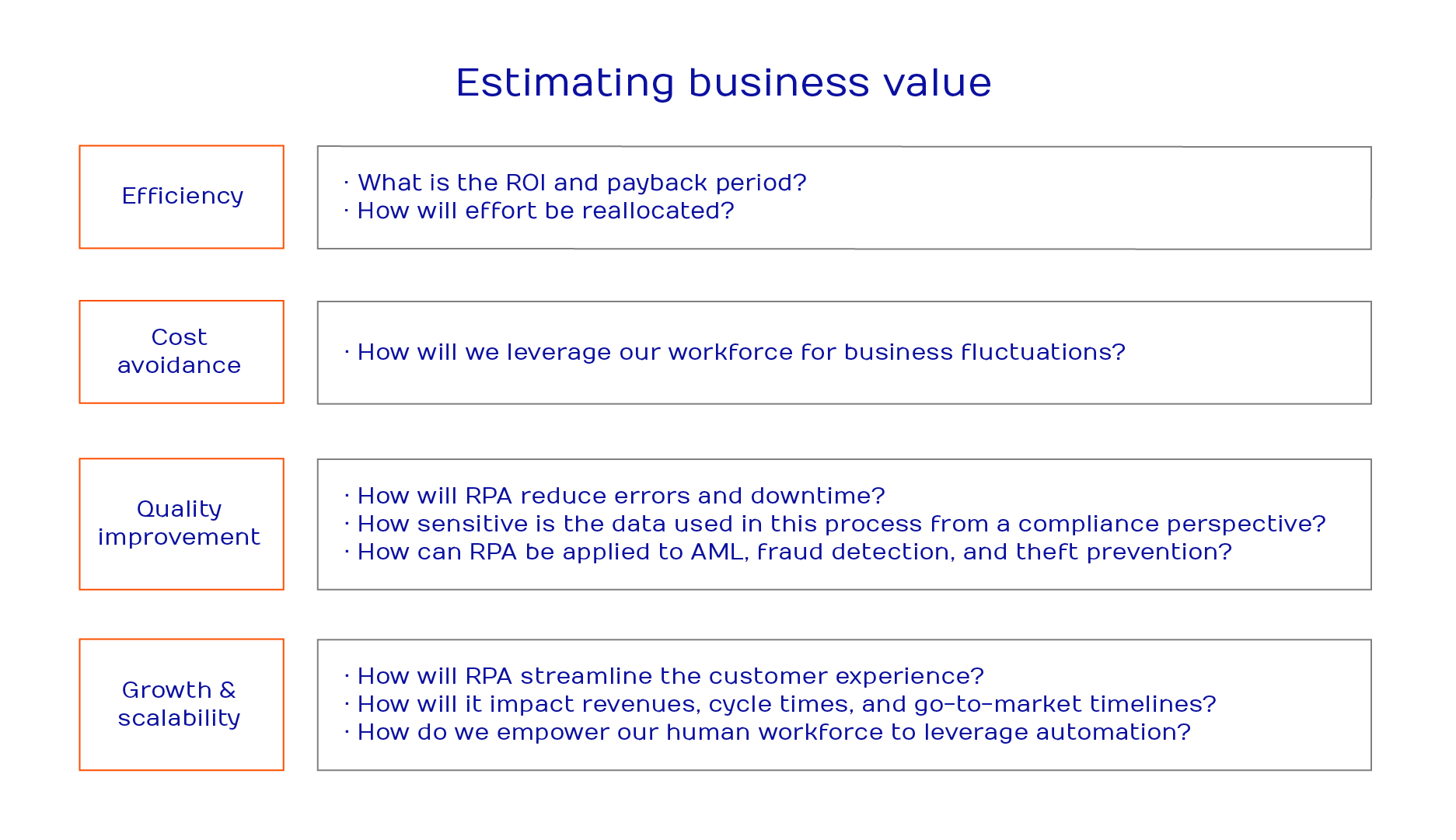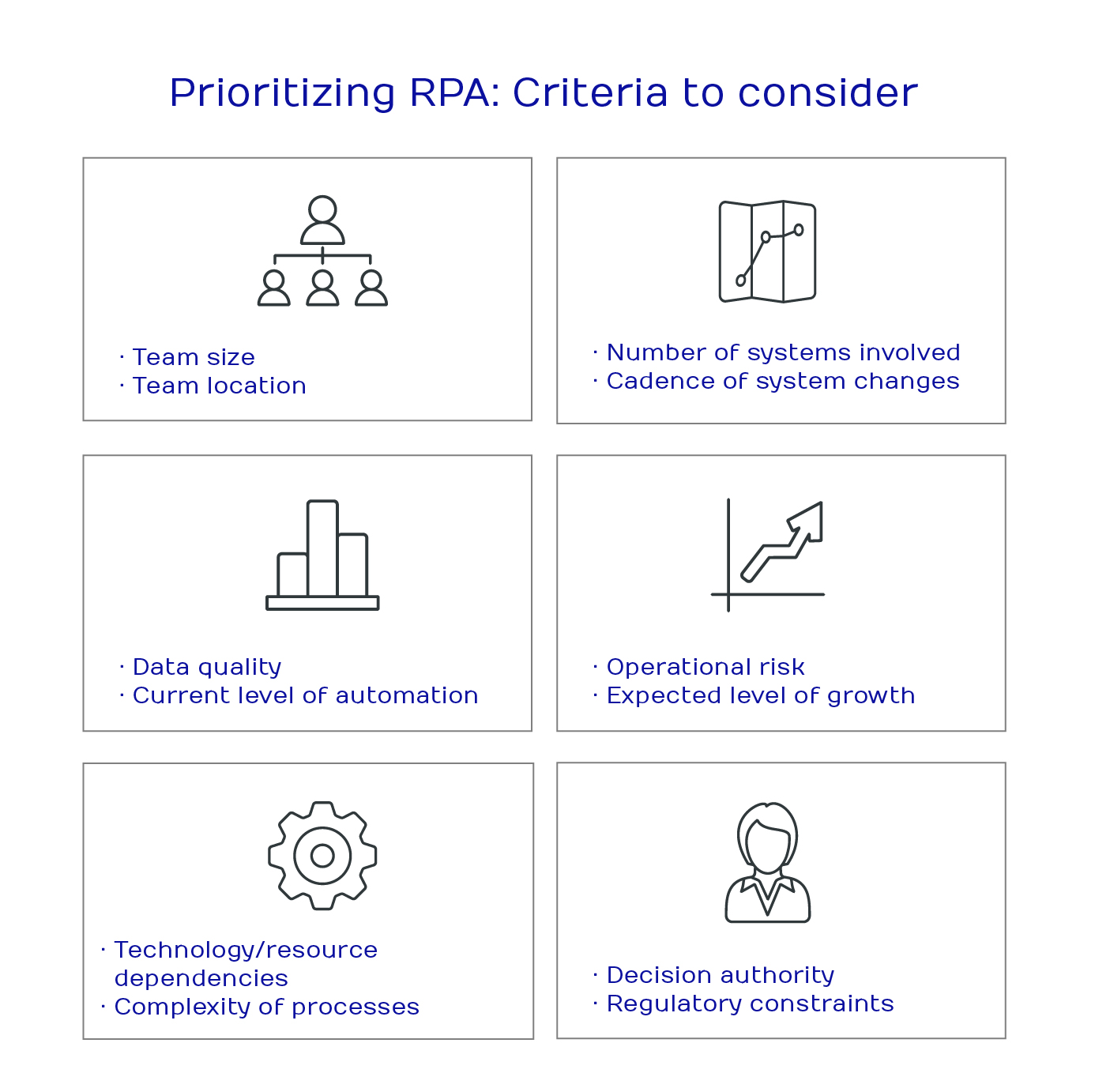6-minute read
As the spread of coronavirus continues to disrupt business and personal life throughout the United States, customer inquiries are flooding into call centers across industries, from travel to finance to telecommunications, a huge spike in the need for best processes for RPA. On March 25 alone, New York City received about 6,550 medical 911 calls, more than it received on 9/11.
At the same time, call center agents are increasingly encouraged to work from home due to escalated health and safety protocols, and businesses are relying heavily on messaging to adapt to this remote-work context. The combination of spiking traffic and shifting capacity is resulting in hours-long wait times and other service gaps, and many call centers are looking to AI-driven automation to fill the void.
The current crunch in call centers is just one example of a situation that automation can alleviate by taking on simple processes, allowing employees to focus on more complex tasks. Of the automation options available, robotic process automation (RPA) has the advantage of enabling business and technology users to easily configure software to mimic the actions of a human interacting within technology systems.
Successful RPA implementation starts with the decision on which processes to select, which can easily “make or break” the initiative. Regardless of how well you plan and execute, robotic process automation implemented on a poorly suited process will almost assuredly fail to yield the desired results.
Contrary to a popular misconception, successful RPA process selection is not a matter of running through a checklist and assigning a “go” or “no-go” label to every process under consideration. A one-dimensional approach can cause the organization to miss out on process improvement opportunities that may not involve a full RPA implementation. For this reason, we recommend a systematic approach to process selection that accommodates a broader range of solutions.
Phase 1: Assess candidate suitability
When selecting processes for robotic process automation, the first consideration is suitability, as not all processes are equally good candidates.
When assessing a process for RPA, we traditionally ask three questions as a first step:
- Is it repetitive and rules-based? Does the process contain a defined set of tasks required for execution?
- Is it software-based? Can the data required for the process be accessed electronically?
- Is it documented? Is the process transcribed with appropriate details?

As intelligent tools become more advanced and more accessible to businesses of all sizes, the approach to these criteria is evolving. Machine learning is enabling digital workers to perform more cognitive tasks that may not be based on a defined set of rules. For processes that are not 100 percent software-based, technology such as optical and intelligent character recognition (OCR/ICR), natural language processing (NLP), and image recognition can be leveraged to accommodate handwriting, speech, photos, and other nondigital data. And for processes not yet documented, process mining technology can use event logs to map out precise flows showing how processes execute via standard and variant paths.
Let’s look at an example from the call center — specifically, accessing a caller’s account.
- Repetitive/rules-based: When the caller is positively identified, his or her record should appear on the agent’s screen. AI can be leveraged to also display applicable offers that the agent can recommend to the customer during the call.
- Software-based: The call system can access IVR and caller ID data to identify the customer using his or her phone number, or leverage voice or face recognition technology for identification.
- Documented: While this criterion will vary by organization, the account lookup process can be easily documented, or process mining can be leveraged to create a precise process flow.
For processes that meet all three criteria, possibly with “help” from smart technology, we move on to evaluate how each adds value to the organization and how it will benefit the bottom line.
Phase 2: Estimate business value
Even if a process meets all criteria (and/or if the use of intelligent tools exempts the need for one or more criteria), implementing RPA will only yield substantial benefit if the process is positioned to drive value for the organization. For this step, we look at questions in four key areas: efficiency, cost avoidance, quality improvement, and growth/scalability.

As RPA becomes more common, we are experiencing a paradigm shift that is bringing about benefits organically. Organizations are becoming empowered to reallocate their efforts towards value-add activities that contribute to the bottom line. Call center agents can focus on building customer relationships rather than tracking down information, and data scientists can focus on extracting insights instead of aggregating data, to cite just two examples. Businesses are also beginning to adopt an “automation first” mindset, addressing new, repetitive tasks by asking “How many bots do we need?” before considering other approaches.
Returning to the call center example, the high cost of live customer support has been well documented across industries. RPA can shave time off customer calls, offering the potential to reduce per-call costs and allowing agents to focus on delivering personalized service. In a large call center, a one-minute reduction in average handle time (AHT) across the board could result in up to $5 million in cost avoidance annually.
Of course, streamlining customer service through RPA is about more than alleviating pressure on agents. Customers who experience fast, frictionless service are more likely to have a positive impression of your brand and to keep coming back.
Phase 3: Prioritize the short list
Once an organization creates a short list of good candidates for RPA, the next question is usually “Where do we start?” Consider the following criteria in determining which processes to prioritize, and keep in mind that as robotic process automation programs mature, the weight of each factor is likely to evolve as well.

In our call center account lookup example, the priority of automating the process will depend on the organization. Businesses that receive relatively few phone calls will see lower overall cost savings from automation and may want to place the initiative further down on their priority list, while those that receive thousands of calls per day have a greater incentive to assign a higher priority.
Putting it all together: process selection matrix
When selecting processes for RPA implementation, the goal is evaluating speed to value and prioritizing processes where automation can deliver the greatest value, while mitigating risk, in the shortest time frame. It can be helpful to visualize processes within a dynamic matrix of complexity versus business value and prioritize accordingly:

As computations of complexity and value change over time, processes can slide from one quadrant to another. Because of this fluidity, organizations will want to re-visit the matrix and adjust their RPA priority list accordingly each time they approach a decision.
“Give me six hours to chop down a tree and I will spend the first four sharpening the axe.”
Abraham Lincoln
As call centers face the challenges of a new reality in the age of coronavirus, robotic process automation offers a solution that’s easy to implement and manage, if the right processes are selected. Process selection can make or break an RPA implementation program, and it’s not a simple undertaking. It requires a deep understanding of your organization’s existing processes, in terms of both complexity and perceived business value. The good news is, the more strategically you plan your implementation, starting with process selection, the greater your chances of success.

Digital transformation done right
We create powerful custom tools, optimize packaged software, and provide trusted guidance to enable your teams and deliver business value that lasts.

Amit Unadkat is a Manager of Digital Transformation with extensive experience in robotic process automation, virtual assistants, business process optimization, and technical product management.

